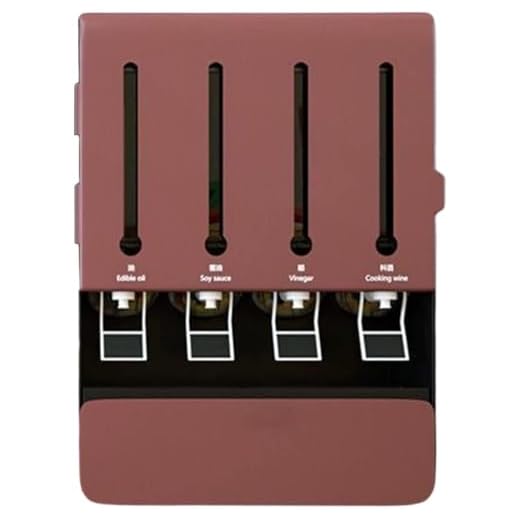



For optimal preservation, store this condiment in a cool, dark place, preferably in a cupboard or pantry. While refrigeration is not mandatory, it can enhance the flavor and maintain the quality for a longer period. If you choose to refrigerate, expect a slight thickening of the liquid, which is perfectly normal and does not affect its usability.
Once the bottle is opened, ensure the cap is tightly sealed to prevent contamination and oxidation. The acidity in the liquid acts as a natural preservative, allowing it to remain safe for consumption for months, if not years. However, always check for any off odors or unusual changes in appearance before use.
In summary, while refrigeration isn’t essential, it can be beneficial for maintaining freshness. Store it in a cool, dark location, and enjoy your culinary creations without worry.
Storage Recommendations for Opened Vinegar
It’s advisable to keep this condiment in a cool, dark place. A pantry or cupboard is ideal for maintaining its quality post-opening.
Here are key points to consider:
- Temperature fluctuations can affect flavor. A stable environment is preferable.
- Seal the bottle tightly to prevent exposure to air, which can lead to spoilage.
- Check for any unusual odors or sediment, which may indicate deterioration.
While refrigeration is not necessary, if you prefer chilled condiments, feel free to store it in the fridge. Just be aware that chilling might alter its flavor profile slightly.
For optimal usage, aim to consume within a year of opening. Regularly inspect the bottle to ensure it retains its taste and aroma.
Understanding the Shelf Life of Red Wine Vinegar
Once you pop the cork on a bottle of this flavorful liquid, it can last for several years if stored correctly. The acidity acts as a preservative, ensuring that it maintains its quality over time. Generally, an unopened bottle can remain stable indefinitely, while an opened one should be used within a few years for optimal taste and aroma.
Factors influencing longevity include light exposure, temperature, and container material. Keep it in a cool, dark place, preferably in a glass or ceramic bottle. Metal or plastic containers can alter the flavor profile over time, so it’s best to transfer it if necessary.
For those wondering about its usage beyond the kitchen, this versatile product can be utilized for cleaning purposes. If you’re curious about how to safely clean gym shoes, check out this expert advice.
| Storage Condition | Shelf Life |
|---|---|
| Unopened | Indefinitely |
| Opened | 1-3 years |
Regularly inspect the liquid for any changes in clarity or color. If you notice sediment or a cloudy appearance, it might be time to dispose of it. Using your senses is the best way to ensure you’re enjoying a high-quality product.
Signs That Your Vinegar Has Gone Bad
Check for a cloudy appearance. If the liquid appears murky instead of clear, it may indicate spoilage.
Observe for sediment at the bottom of the bottle. While some sediment can be normal, excessive buildup may suggest that the product has aged beyond its prime.
Pay attention to any off-putting odors. A strong, unpleasant smell can signal that the liquid is no longer fresh.
Look for changes in flavor profile. If the taste has become overly harsh or sour compared to its original profile, it’s likely time to discard it.
Examine for visible mold or unusual growth. Any signs of mold on the surface indicate that the product should not be consumed.
Lastly, if the product has been stored improperly for an extended period, it’s wise to err on the side of caution and replace it.
The Impact of Temperature on Quality
Storing this liquid at optimal temperatures significantly affects its taste and aroma. Ideally, maintaining a cool, dark environment helps preserve its integrity. Temperatures exceeding 70°F (21°C) can lead to accelerated aging and flavor degradation. The ideal storage range is between 50°F and 60°F (10°C – 15°C).
Heat exposure can result in unwanted chemical reactions, altering its flavor profile and potentially leading to a vinegar that tastes harsh or overly acidic. For those who prefer to keep it on a kitchen shelf, ensure it is away from heat sources like stoves or direct sunlight.
When discussing longevity, temperature fluctuations should be avoided. Consistent temperatures contribute to maintaining quality. Consider using a temperature-controlled pantry or cupboard for optimal preservation.
In my experience, even minor adjustments in temperature can impact the sensory qualities of this product. Maintaining a stable environment not only enhances its shelf life but also ensures that every drop delivers the intended flavor experience.
Proper Storage Techniques for Opened Red Wine Vinegar
For maintaining quality, store opened vinegar in a cool, dark place, away from direct sunlight and heat sources. A pantry or cupboard is ideal.
Container Recommendations
- Use a tightly sealed glass or plastic bottle to minimize exposure to air.
- A metal or ceramic container can also work, but avoid those that may react with acidity.
Temperature Considerations
Aim for a stable environment, ideally between 50°F to 70°F (10°C to 21°C). Fluctuating temperatures can affect flavor and aroma.
Check the cap or cork regularly to ensure a snug fit, as this helps preserve the product’s integrity. If you notice any sediment, that’s normal; simply shake gently before use.
Lastly, consume within a reasonable timeframe, typically within 6 months to a year for best flavor, although it remains safe beyond that. Trust your senses–smell and taste will guide you in determining freshness.
Comparing Refrigeration vs. Room Temperature Storage
For optimal preservation of opened products, storing in a cool environment is often recommended. However, keeping them at room temperature can also be a viable option. When assessing both methods, the key difference lies in how temperature affects flavor and acidity over time.
Storing in a cooler environment slows down oxidation, helping maintain the product’s intended taste profile longer. This is particularly beneficial if you don’t consume it frequently. The cooler conditions can prevent the development of off-flavors that might arise from prolonged exposure to air.
On the other hand, maintaining the product at room temperature is generally acceptable if it’s used regularly. The flavor will remain consistent for a shorter duration, and you may prefer the convenience of having it readily available. However, be aware that higher temperatures can accelerate changes, potentially leading to a decline in quality.
In conclusion, opting for refrigeration is ideal for those who prioritize longevity and flavor integrity, while room temperature storage may suit those who frequently use the product. Ultimately, the choice depends on your usage habits and flavor preferences.
How to Extend the Freshness of Red Wine Vinegar
To maximize longevity, store opened bottles in a cool, dark place, away from direct sunlight and heat sources. A pantry or cupboard works well, maintaining a stable temperature.
Use the Original Cap
Always reseal the bottle with its original cap or cork to minimize exposure to air, which can lead to oxidation and flavor deterioration.
Consider Smaller Containers
If you frequently use small amounts, transfer excess liquid into a smaller bottle. This reduces the air-to-liquid ratio, helping preserve quality longer.
Keep utensils clean when pouring to prevent contamination. Avoid introducing moisture or other substances that could compromise the flavor profile.
Regularly check the liquid for any changes in aroma or taste. Freshness is key to ensuring your culinary creations shine with the right balance of acidity.







